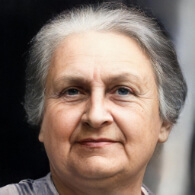Imagination (Montessori)
In Montessori education, imagination is regarded as a powerful tool that aids in the process of abstract learning and intellectual exploration[1]. The method encourages the use of imagination to enable children to understand complex concepts that cannot be imparted through a single lesson.
As per the Montessori philosophy, children enter a sensitive period for imagination in the second plane of development (from ages 6-12), often referred to as the Conscious Period. During this phase, children are able to conceptualize understanding abstractly, without the need for concrete materials[2].
Imagination is particularly emphasized in the third plane of development (adolescence), where creativity and self-expression become predominant modes of imaginative use.
Montessori Quotes on Imagination
"The secret of good teaching is to regard the child's intelligence as a fertile field in which seeds may be sown, to grow under the heat of flaming imagination."
— Maria Montessori, "To Educate the Human Potential"
Research and Critiques on Imagination
Pro
Supporters of the Montessori method contend that its emphasis on imagination fosters creativity, critical thinking, and problem-solving abilities in children[3].
Montessori education is credited for enhancing children's ability to imagine different perspectives, encouraging empathy and social understanding[4].
Cons
Critics of the Montessori approach argue that it may limit children's imagination by emphasizing reality-based play and learning, and discouraging fantasy play[5].
Some believe that Montessori materials and activities might be overly structured, potentially hindering the development of free and spontaneous imaginative play[6].
Comparison to Other Methods
While traditional education often relies on rote memorization and passive learning, the Montessori method encourages children to use their imagination as a means of understanding and exploring the world around them. This focus on imaginative learning may foster a deeper level of engagement and interest in academic content[7].
Glossary of Montessori Terms
The Glossary of Montessori Terms is a collection of specific terms and vocabulary that are related to the Montessori method of education, primarily focusing on the theory and practice for children aged 3 to 6. The jargon used by Montessori educators offers a unique insight into child development as discussed by Maria Montessori. The 'Montepedia Glossary of Montessori Terms' originated from a glossary that was compiled by the late Annette Haines from the Montessori Training Centre of St. Louis, at the request of Molly O'Shaughnessy from the Montessori Centre of Minnesota. The reason behind the creation of this glossary was to supplement O'Shaughnessy's lecture at the Joint Annual Refresher Course that took place in Tampa, Florida, in February 2001.[8] The glossary has since been expanded and updated with additional 'Montessori Terms'.
- 3-Hour Work Cycle
- Absorbent Mind
- Adaptation
- Adolescence
- Albums
- Advisor
- Analysis of Movement
- Casa dei Bambini
- Children of the Earth
- Children's House
- Choice
- Classification
- Concentration
- Concrete to Abstract
- Control of Error
- Coordination of Movement
- Cosmic Education
- Creativity/Imagination
- Cycle of Activity
- Development of the Will
- Deviations
- Didactic Materials
- Director
- Discipline from Within
- Earth Child
- Elementary Classroom
- Erdkinder
- Exercises of Practical Life
- False Fatigue
- Freedom of Choice
- Freedom within Limits
- Grace and Courtesy
- Great Stories
- Ground Rules
- Guide
- Help from Periphery
- Human Tendencies
- Imagination
- Independence
- Indirect Preparation
- Indirect Presentation
- Isolation of a Difficulty
- Intrinsic Motivation
- Job
- Kinderhaus
- Language Appreciation
- Language Acquisition
- Learning Explosions
- Materials
- Materialised Abstractions
- Mathematical Mind
- Maximum Effort
- Mixed Ages
- Montessori Materials
- Nido
- Montessori Materials
- Normalization
- Obedience
- Peace
- Personality
- Planes of Development
- Points of Interest
- Practical Life
- Phonemic Awareness
- Phonics Instruction
- Phonological Awareness
- Prepared Environment
- Presentation
- Primary Classroom
- Psychic Embryo
- Reading Comprehension
- Repetition
- Respect
- Self-Discipline
- Self-Regulation
- Sensitive Periods
- Sensorial Materials
- Simple to Complex
- Socialization
- Society by Cohesion
- Sound Games
- Three-Hour Work Cycle
- Valorisation
- Vocabulary Enrichment
- Work
Please help to translate this page into your local language
References
- ↑ Lillard, A. S. (2017). Montessori: The science behind the genius. Oxford University Press.
- ↑ Montessori, M. (1948). To Educate the Human Potential. Madras, India: Kalakshetra Press.
- ↑ Lillard, A. S. (2017). Montessori: The science behind the genius. Oxford University Press.
- ↑ Healy, J. M. (2004). Your child's growing mind: Brain development and learning from birth to adolescence. Broadway Books.
- ↑ Gopnik, A. (2016). The gardener and the carpenter: What the new science of child development tells us about the relationship between parents and children. Farrar, Straus and Giroux.
- ↑ Elkind, D. (2007). The power of play: Learning what comes naturally. Da Capo Lifelong Books.
- ↑ Lillard, A. S. (2017). Montessori: The science behind the genius. Oxford University Press.
- ↑ Haines, A. (2001). Glossary of Montessori Terms. Montessori Training Centre of St. Louis.
